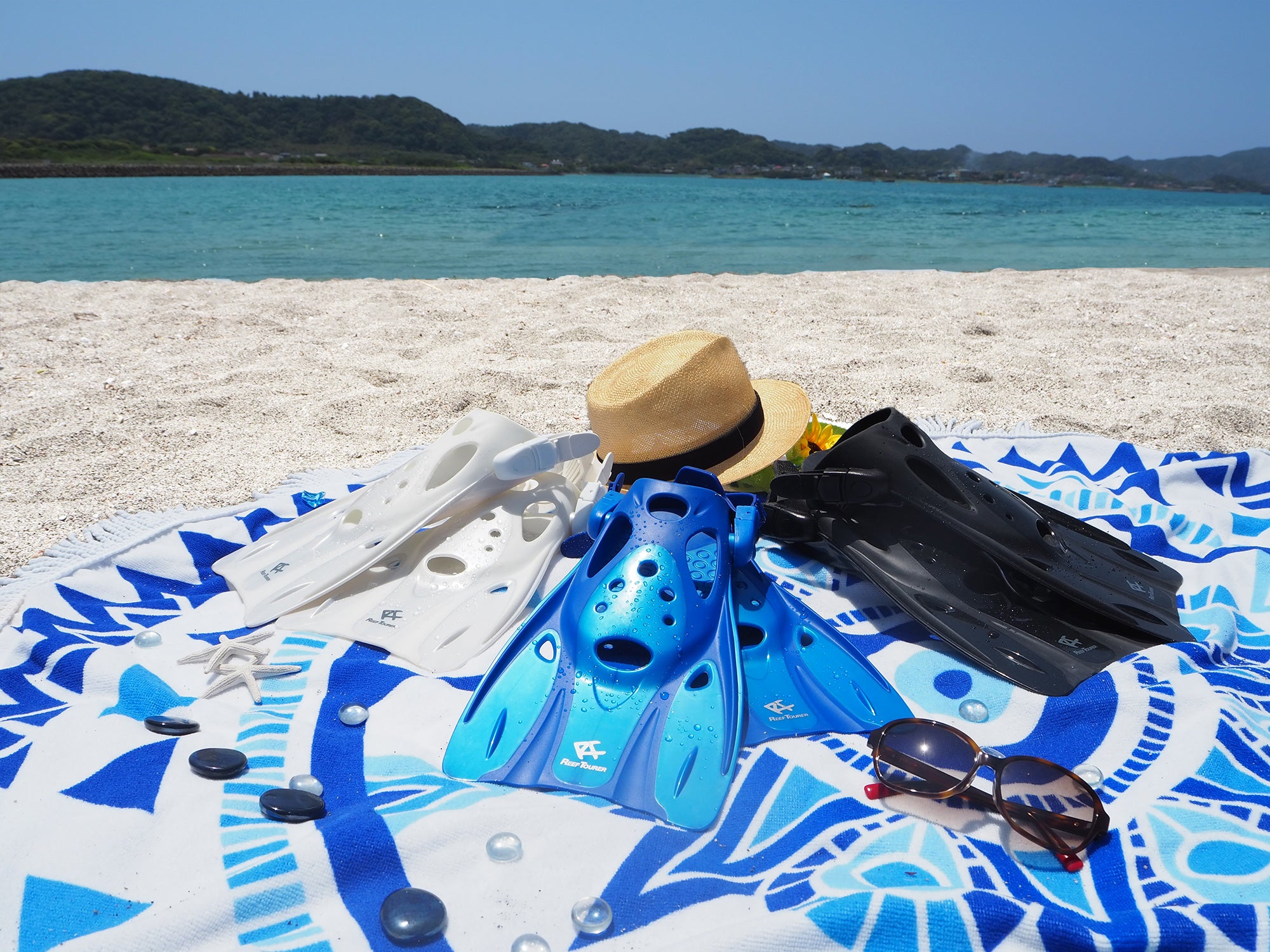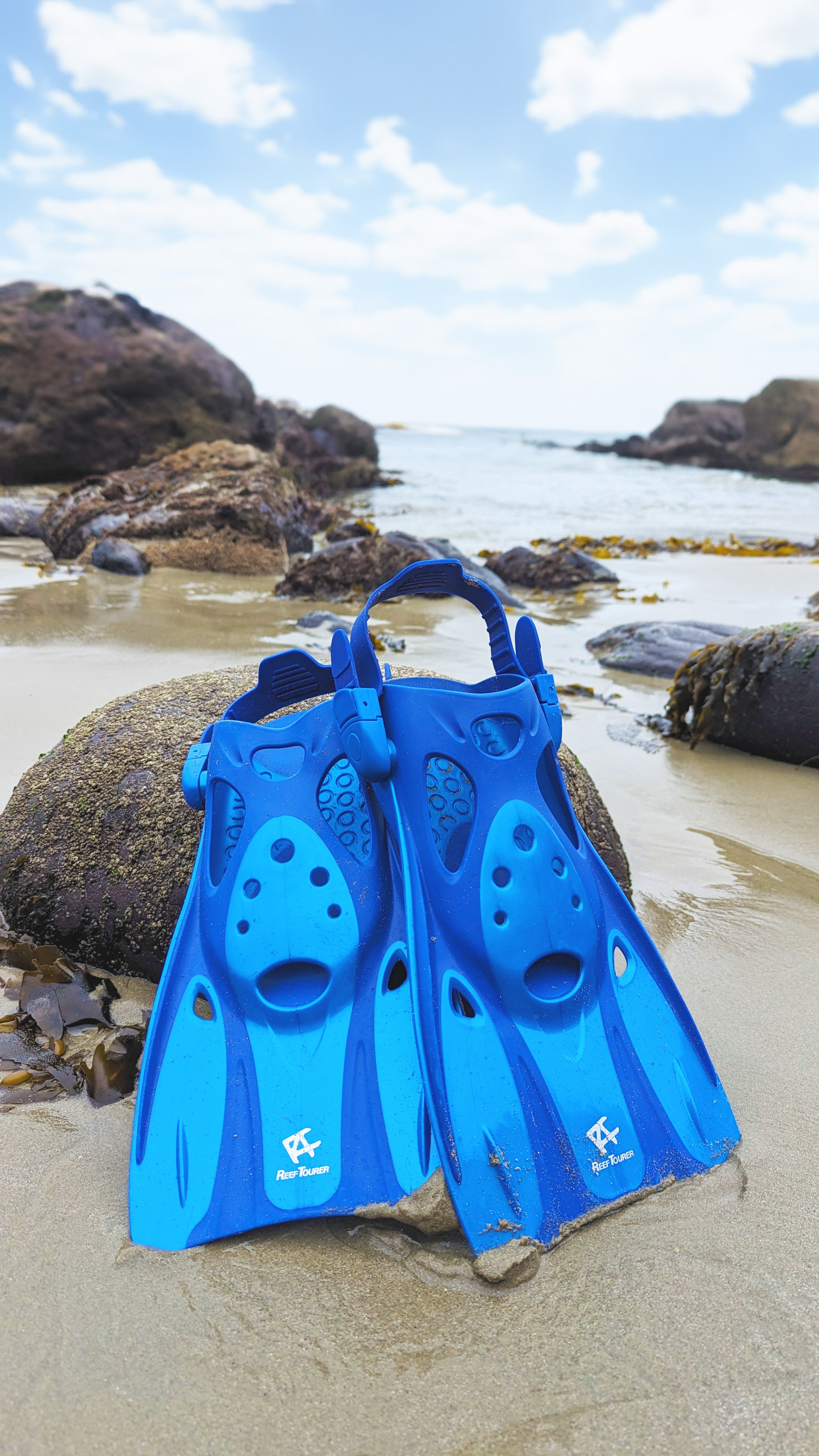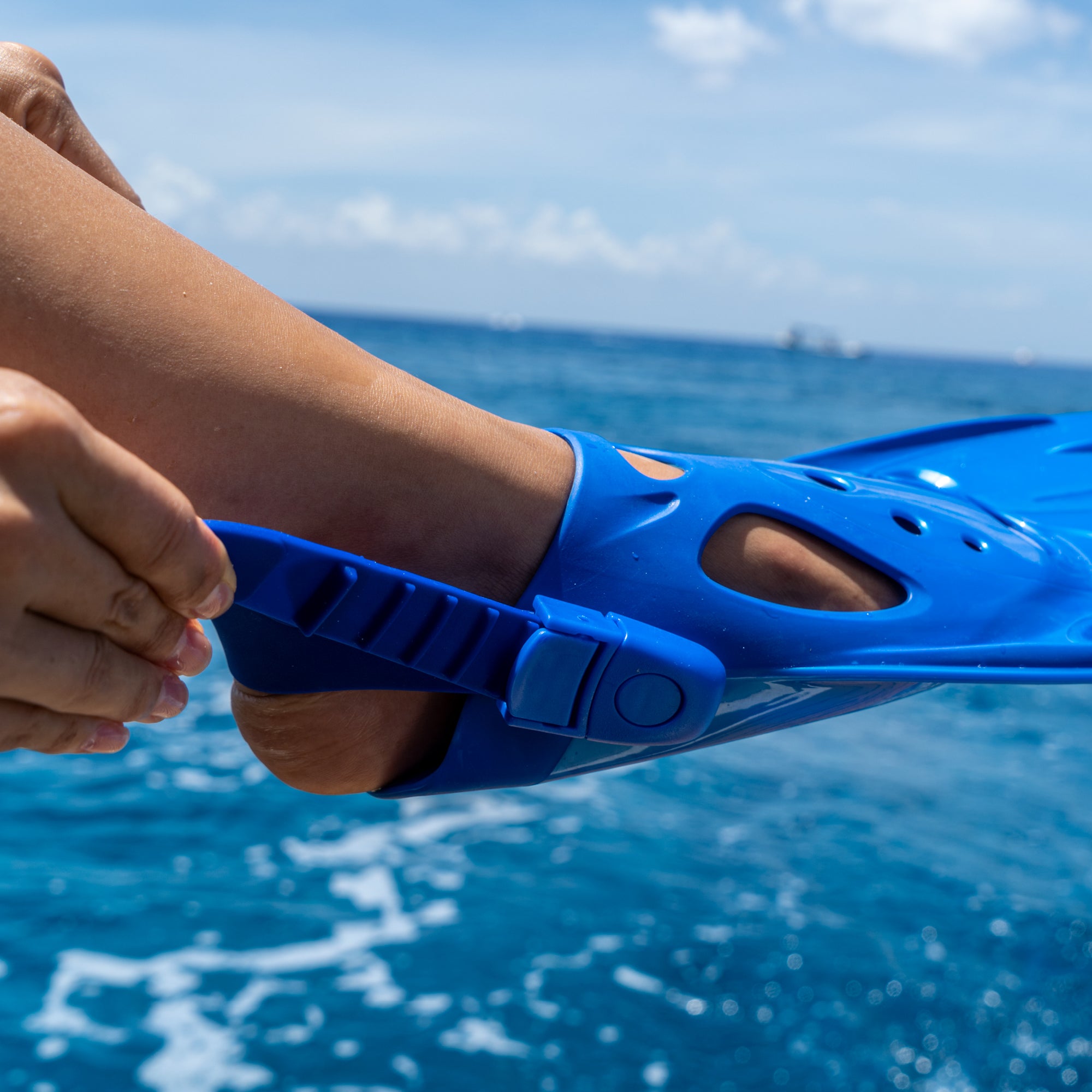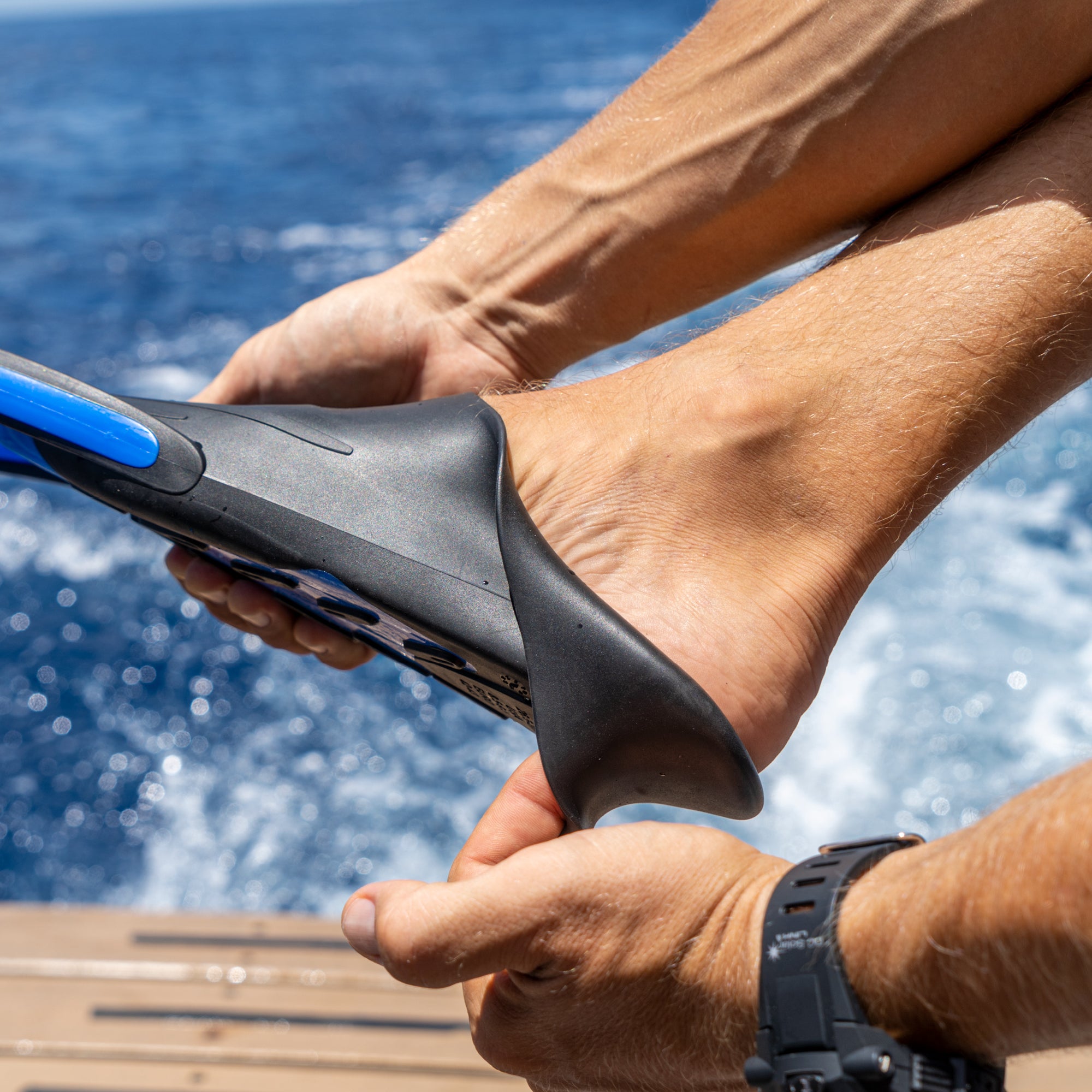Fin Essentials

The Purpose of Fins
Fins allow you to move efficiently through water. There are many types of fins available depending on the activity they are to be used for. Fins can be used for swimming, snorkeling, scuba diving, and free diving. The wrong type of fin can drastically change your experience, so we’re going to help you understand how to make the right choice. It’s best to narrow down the fin you purchase based on the activity they will be used for.

Fin Features to Look For
- Strap type: Open-heel or full foot
- Blade vents/water channel
- Blade rails
- Material: Plastic, rubber, polyurethane
- Flexible foot pocket
- Blade strength
- Blade length
What's the Difference Between Snorkeling and Scuba Fins?
Snorkeling Fins
Snorkeling can be done with little to no experience, but it does require additional gear. Although not required for swimming, fins are highly recommended, and are critical for your safety, especially when dealing with stronger currents.
They help you generate power to easily propel yourself along the surface, as well as help you dive down to get a closer look at wildlife. They protect your feet from cutting your feet on rocks or coral.
Fins for snorkeling are traditionally shorter in length, lightweight, travel friendly, and capable of being worn barefoot.
Scuba Fins
Fins for scuba diving generally should be more powerful than snorkeling fins because of the weight of the additional gear required. Since conditions can vary, you need to have the proper fins to maneuver those conditions.
A scuba fin is usually longer in length, heavier, and made from more durable materials. They also have a stiffer side railing to keep from bending too easily so that you can still propel forward. Typically, scuba divers prefer an open heel fin paired with a boot to keep warm for lower temperatures experienced at depth. That being said, a split fin can work well when conditions are warmer and calmer.

Open Foot or Open Heel Style Fins
These are most commonly used for scuba diving but not limited to that.
You can wear this type of fin with booties, which is recommended because booties protect your feet and provide warmth. They also cushion your foot in the fin which cuts down on blistering, allowing you to kick for longer periods of time.
Closed Foot or Full Foot Style Fins
A full foot pocket doesn’t require any adjustment. You can slip your bare foot into them so they aren't worn with booties. They are usually made of a soft rubber material to be flexible on the foot.
When wearing full foot fins, be sure that they are the perfect fit because a too tight or loose fit can lead to discomfort, and in many cases, blistering.
You can optionally wear neoprene socks with this type of fin, but make sure you have them with you when you try on the fins. Full foot fins are mainly used in warm water environments.
